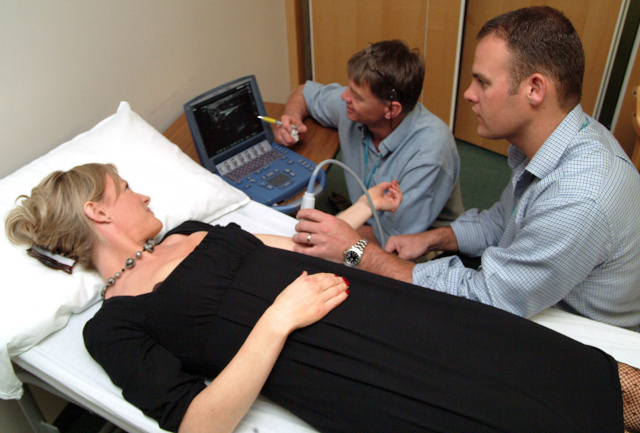
Hand-carried ultrasound systems from Sonosite are helping to guide regional blocks more accurately and more effectively at the Norfolk and Norwich Hospital, according to anaesthetists Dr Stef Oosthuysen and Dr Morné Wolmarans. Stef explained: “Guiding regional blocks by peripheral nerve stimulation is an indirect method that is not always very efficient; frequently the anaesthetist performing the block might get wonderful stimulation but still a poor block. Ultrasound allows us to see beyond the skin and observe the nerve, the direction of the needle being inserted and the deposition of the local anaesthetic around the structure to be blocked. It is now clear why the nerve block sometimes does not work because all the anaesthetic pools down one side of the nerve, and we can move the needle to ensure better deposition of the anaesthetic agent. Anaesthetists can achieve more successful nerve blocks with ultrasound guidance and save time in doing so.”
The hospital first chose Sonosite hand-carried systems for use in the anaesthetic department for placing central venous lines, as a direct result of the 2002 NICE recommendations. Morné added: “The portability of all our Sonosite ultrasound systems is really helpful in the theatre setting. Our iLook® systems are used continuously for placing lines, leaving the department’s Sonosite 180PLUS™ system for regional blocks whenever possible. Given the choice, I too prefer the ultrasound-guided method over anatomical techniques for regional anaesthesia. Not only can we see the spread of local anaesthetic in comparison to the target nerve, but we are also using much smaller volumes of anaesthetic compared to the old methods, thus improving safety.”
Stef added hopefully: “We are currently looking for charitable donations for more hand-carried systems so that we can provide the best possible service for anaesthesia and pain control.”

